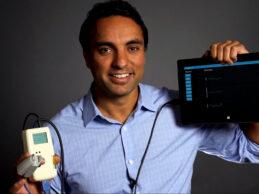“Show me the money!” No one old enough to have seen the 1996 movie, Jerry Maguire, will ever forget that memorable phrase. That simple but powerful phrase could apply to every person who punches a clock for a living and just about every business, including community-based organizations (CBOs) and Connected Communities of Care (CCC). For CCCs and other non-profits, a parallel but no less powerful phrase, “No margin, no mission,” also rings true― just ask Sister Irene Kraus of the Daughters
Read More
Why A Smart Command Center Requires A Health Cloud Platform
Aviation, military, NASA, or even utilities like the New York Power Authority—almost all high-consequence, complex organizations have one thing in common: a command center. The concept of a command center or a ‘war room,’ or ‘air traffic control’ has been around for a while. Command centers help counter logistical challenges, enable cross-collaboration and guide decision-making with state-of-the-art technology and communications. With them it seems there is absolutely nothing that cannot be
Read More
How Artificial Intelligence Is Making Senior Care More Human
When it comes to skilled nursing facilities (SNFs) in particular and long-term care in general, a human-centered and empathetic approach is not only necessary, it's obligatory. Putting the needs, constraints, and perspectives of patients first enhances the level of care we're able to provide.
Perhaps ironically, it is the integration and adaptation of artificial intelligence (AI) that has demonstrated the biggest potential in improving empathy and compassion in the industry.
It may
Read More
Innovative, Non-Invasive Technologies Advanced Earlier Detection & Monitoring of Liver Disease
Leveraging technological advances to facilitate new ways of engaging patients and integrating non-invasive technology into a liver disease program not only serves to improve individual outcomes and reduce costs but also strengthens the financial performance of health systems and provider organizations that include this approach to testing.
At a time when America’s hospitals and physician groups face lost revenues due to the COVID-19 pandemic, there is a pressing need for reducing costs while
Read More
Payers Struggle with Provider Data Management Too
Provider data management is usually discussed from the provider perspective: the busy staff, the needless paperwork amid a pandemic, the faxing, emailing and uploading of data. In these scenarios, the health plans are often painted as the villains for their bureaucratic processes and unique requirements. But the reality is that health plans aren’t totally to blame.
Payers and providers share a common goal: to provide the best quality care for their patients. The amount of data, including
Read More
Improving Inventory Management During COVID-19 and Beyond
Healthcare systems across the country are facing high patient volumes combined with higher patient expectations during the COVID-19 pandemic. In response, hospitals and other healthcare facilities need to consider technology that can help them keep pace with evolving demands while prioritizing the health, safety, and experience of their patients.
One of the most impactful solutions in a healthcare facility’s technology arsenal are the ones focused on inventory management. These
Read More
Data-Driven Future: Impact of Machine Learning on Diabetes Management
“Information technology and business are becoming inextricably interwoven. I don't think anybody can talk meaningfully about one without the talking about the other” – Bill Gates wrote this in 1999 and, nowadays, the same can certainly be said about information technology and healthcare.
The ability to collect, analyze, and use data is becoming ubiquitous with many of healthcare’s most exciting advancements. Whether it’s Google’s DeepMind using artificial intelligence (AI) to help
Read More
How to Optimize Your Healthcare Practice with Advanced Technology Solutions
As COVID-19 continues to influence patient behaviors and causes providers to reevaluate how they operate their businesses, healthcare practices all around the world started looking for solutions that emphasize clinical efficiencies, elevate patient revenue cycle management, as well as feature enhanced reporting, and analytics tools. More so, along with facing challenges of the patient intake process during a pandemic, providers have also been put to the test with learning how to meet the sudden
Read More
Untapping the Potential for Virtual Care in a Pandemic and Beyond
Virtual care is everywhere and ubiquitous. But at a time when the world is amid a global pandemic, virtual care is also being underutilized. The technology exists today to help our healthcare system not only more effectively and efficiently manage care during COVID-19, but also exponentially scale capacity in the face of future outbreaks.
Virtual care defined
Virtual care is a broad term. It encompasses all the ways healthcare practitioners provide for care remotely. This can mean
Read More
Why Patients, Not EHRs, Deserve our Undivided Attention
We cannot earn patients’ trust and respect if we are tethered to a computer in the exam room, navigating the EHR concurrent to a visit or otherwise in a hurry to finish so we can return to our office where data entry to the EHR awaits us.
______________________________________________________
I am a physician married to a physician, and for years, our evenings consisted of putting the kids to bed, then sitting next to each other, laptops open, finishing our charting. If you are a
Read More











